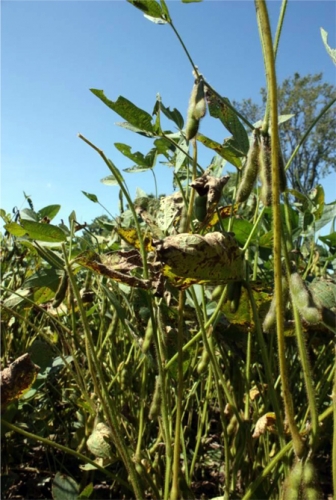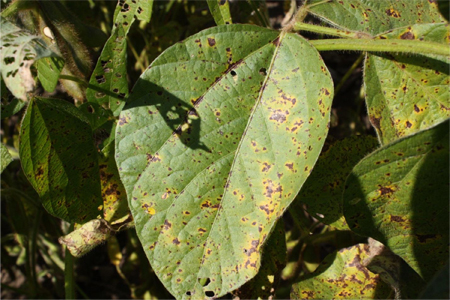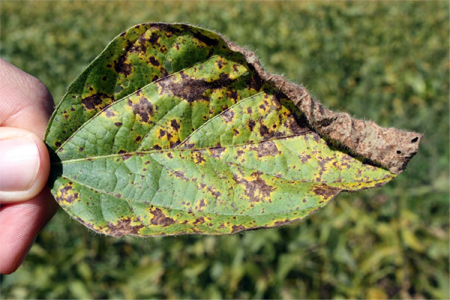More Septoria brown spot in soybeans in some areas
Higher than normal levels of Septoria brown spot disease have caused premature yellowing and defoliation of some late planted soybeans in Eaton County.
Septoria brown spot has shown up at levels higher than normal this year. The disease is caused by the fungus Septoria glycines, which resides in soybean residue. The disease is often present but primarily on the lower canopy, and if weather conditions are warm and dry, it rarely moves into the upper canopy.
Heavy and frequent rainfall in August has, in some instances, allowed this disease to move into the upper soybean canopy. A few fields around Eaton County are showing signs of premature defoliation due to this disease (see picture, below). Septoria brown spot is very often present in the lower soybean canopy and is generally thought to have a minimal yield impact. However, under situations of high disease pressure, yield losses of 1 to 9 percent may occur.

Management of this disease should include rotation out of soybeans for at least a year. If tillage is an option, incorporating soybean residue into the soil will help reduce survival of the Septoria glycines fungus. Recent studies in Ohio have demonstrated that fungicides applied at the R3 growth stage can significantly reduce levels of brown spot. However, significant increases in yield were only noted in three out of six trials. Further studies are needed to determine Septoria brown spot yield effects and the optimal timing of foliar fungicide applications when warranted. For further information, see the Ohio State University Extension’s factsheet on Brown Spot of Soybeans.





 Print
Print Email
Email


